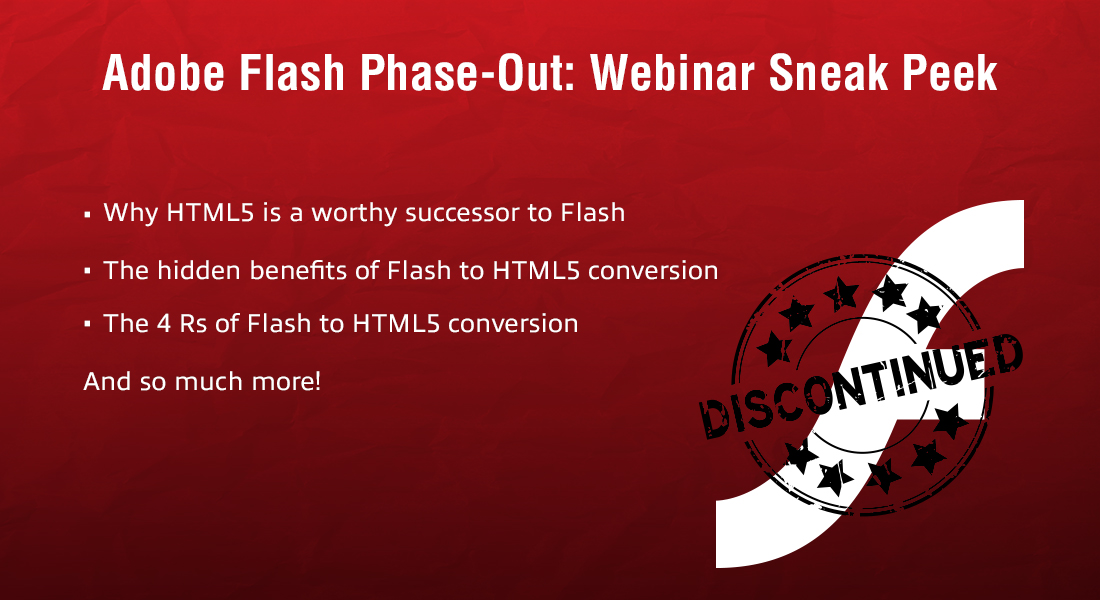Flash to HTML5 Conversion after the Phase-out [Infographic]
![Flash to HTML5 Conversion after the Phase-out [Infographic] Flash to HTML5 Conversion after the Phase-out [Infographic]](https://blog.commlabindia.com/hubfs/Imported_Blog_Media/flash-html5-conversion-post-phase-out-info.jpg)
Time and tide wait for none. However, just this once, this might not be wholly true in the case of Flash to HTML5 conversion. Yes, in case you missed the deadline of December 31, 2020 and are wondering if you will be able to save your legacy Flash-based courses, there’s good news for you!
If you are still confused as to why you need to go for Flash to HTML5 conversions, here are a few reasons:
- Make your courses mobile compatible and extend their utility
- Reconfigure lengthy legacy courses to microlearning nuggets
- Update Flash-based courses for content or branding
- Add a dose of new-age interactions and engagements
Explore the 4 R’s’ of Flash to HTML5 conversion.
However, with Adobe stopping support for Flash, opening these courses is a difficult task and so becomes the conversion. Luckily, there are a few workarounds such as using an older version of the Flash player, say 32.0.0.371 or its predecessors – but these have their own drawbacks such as security threats.
You can partner with a vendor experienced in handling Flash to HTML5 conversion at scale and quality to save yourself the hassles. They will help with the project management, tool selection, and more.
And here’s a bonus – experienced vendors will help you convert Flash to HTML5 based on your specific requirements and don’t just offer a one-size-fits-all solution. You can, for instance:
- Convert legacy courses low on interactivity to the MP4 format and upload to your LMS to enable tracking
- Republish legacy courses developed in old versions of authoring tools to a newer version and also enhance interactivities
Take a look at this infographic that tells you how you can convert Flash courses to HTML5 – even after the phase-out – and the best way to do it.
And check this resource which will give you a bird’s eye view of the entire Flash to HTML5 conversion process.







